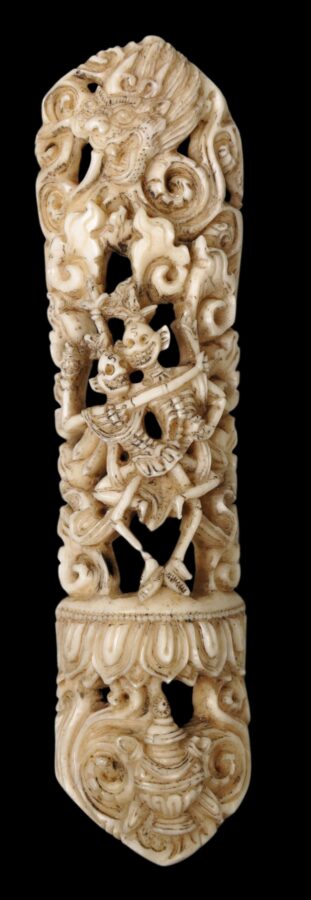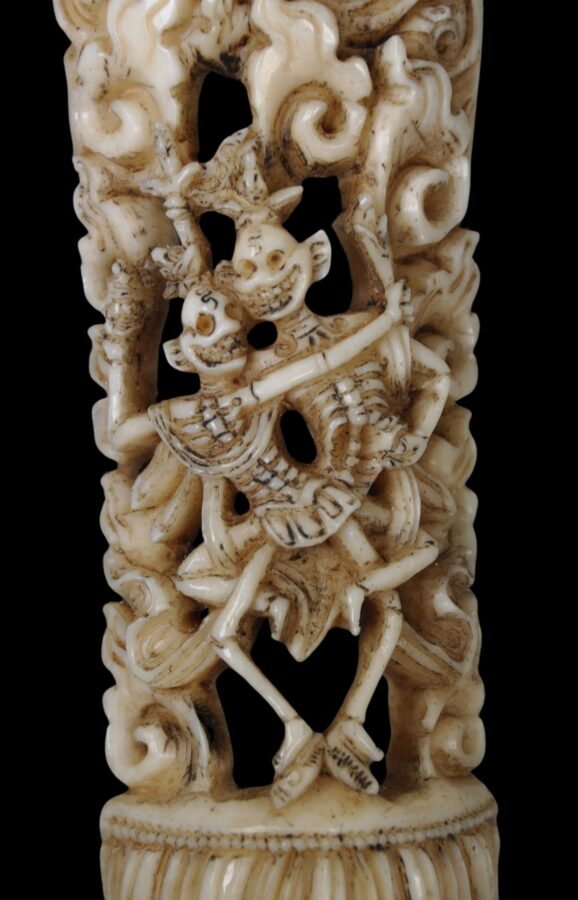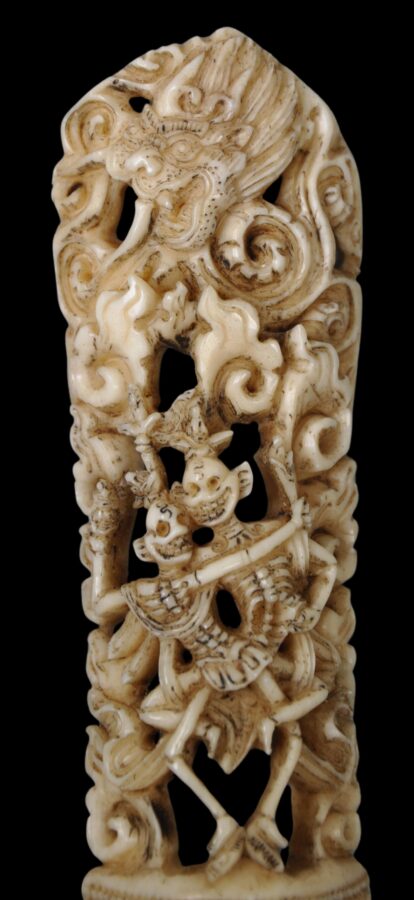This finely carved bone plaque dates to 17th-18th century Tibet and would have decorated a necromancer’s bone apron or girdle. It is unusually detailed and finely carved.
The central part of the plaque has been cast with a pair of citipati. Citipati are the lords of the funeral pyre and charnel or burial grounds, and are the skeleton companions of Yama, the Lord of Death. And yet, they are intended to be humorous or comic figures in Tibetan sacred dance, despite their gruesome appearance. This accounts for their dynamic dance poses and their smiling countenances.
The lower register is carved with a wish-fulfilling kalasha vase. The upper register is carved with the head of a dragon.
Citipati are most properly represented as a pair – one is male and the other is female, and most usually (though not always) they are thought to be brother and sister.
Bone aprons were worn as ritual garments by the practitioner or priest during Tantric rituals. The aprons served to make the priest look more dramatic, as well as symbolising one’s own mortality and the need to release one’s attachment from the physical human body in order to more effectively pursue enlightenment.
Traditionally such bone aprons were made from human bones collected from charnel fields.
The plaque here is in very fine condition and has a honeyed patina. It retains traces of black pigment.
References
Berger, P., & T. Tse Bartholomew, Mongolia: The Legacy of Chinggis Khan, Thames & Hudson, 1995.
Bromberg, A., et al., The Arts of India, Southeast Asia, and the Himalayas: At the Dallas Museum of Art, Yale University Press, 2013.
Henss, M., Buddhist Ritual Art of Tibet: A Handbook on Ceremonial Objects and Ritual Furnishings in the Tibetan Temple, Arnoldsche, 2020.






